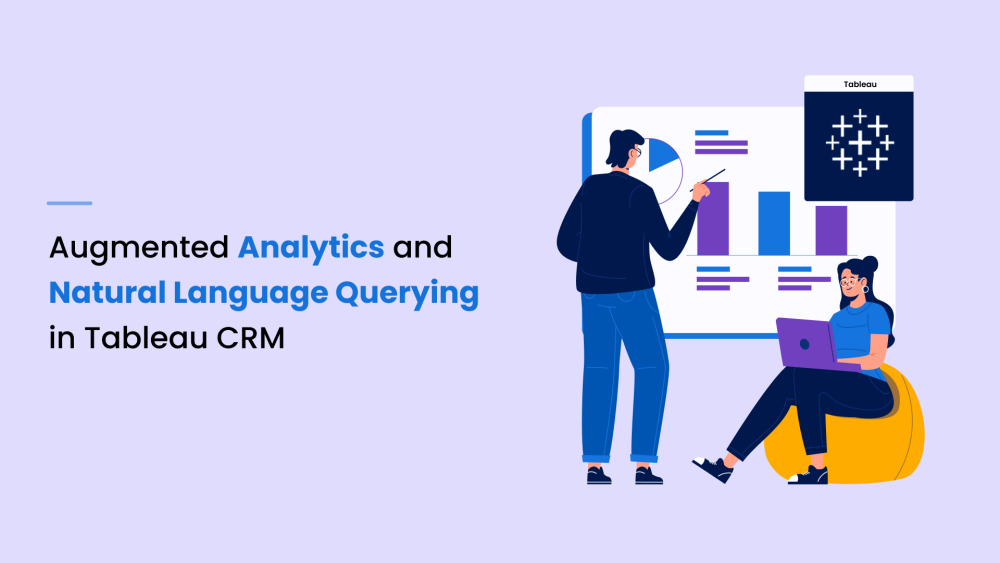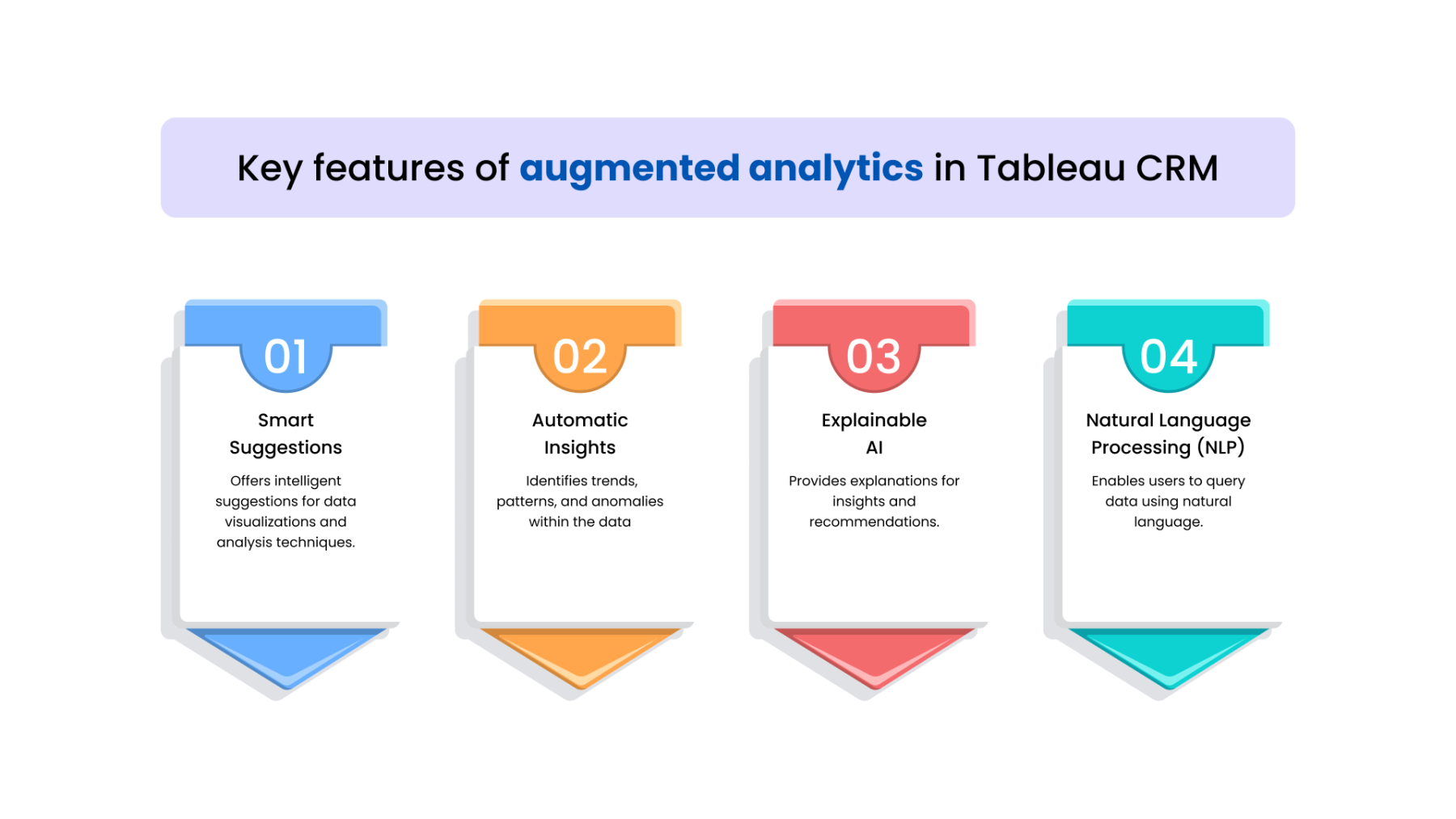Tableau CRM, formerly known as Einstein Analytics, has emerged as a powerful platform for data exploration and visualization. With the integration of augmented analytics and natural language querying capabilities, Tableau CRM empowers users to extract insights from their data more effectively. This blog delves into the advancements in augmented analytics and natural language querying within Tableau CRM, exploring its benefits, use cases, and technical considerations.
Understanding Augmented Analytics
Augmented analytics leverages artificial intelligence and machine learning to automate data preparation, analysis, and insight generation. It enhances the user experience by providing automated suggestions, recommendations, and explanations.
Key features of augmented analytics in Tableau CRM:
-
Smart Suggestions: Offers intelligent suggestions for data visualizations and analysis techniques.
-
Automatic Insights: Identifies trends, patterns, and anomalies within the data.
-
Natural Language Processing (NLP): Enables users to query data using natural language.
-
Explainable AI: Provides explanations for insights and recommendations.
Natural Language Querying in Tableau CRM
Natural language querying allows users to interact with data using plain language instead of complex SQL queries. This empowers users with limited technical expertise to explore data and extract insights.
Example: A user can ask Tableau CRM, "What were the top-selling products in Q3?" and the tool will automatically generate a visualization to answer the query.
Benefits of Augmented Analytics and Natural Language Querying
-
Enhanced Accessibility: Makes data analytics accessible to a wider range of users, including those with limited technical skills.
-
Improved Efficiency: Automates data preparation and analysis, saving time and effort.
-
Enhanced Insights: Uncovers hidden patterns and insights that might be missed using traditional methods.
-
Faster Decision Making: Enables users to quickly access and analyze data to make informed decisions.
-
Increased Adoption: Encourages broader use of analytics within organizations.
Integrating Augmented Analytics and Natural Language Querying into Tableau CRM
-
Utilize Pre-built Features: Tableau CRM offers built-in augmented analytics and natural language querying capabilities.
-
Leverage Third-Party Tools: Integrate with third-party tools that enhance these capabilities.
-
Customize Natural Language Processing: Tailor the NLP engine to understand specific industry terms and jargon.
-
Ensure Data Quality: Clean and prepare data to ensure accurate and reliable results.
Advanced Use Cases
-
Predictive Analytics: Use augmented analytics to forecast future trends and outcomes.
-
Prescriptive Analytics: Generate recommendations based on data-driven insights.
-
Root Cause Analysis: Identify the underlying causes of problems or issues.
-
Anomaly Detection: Detect unusual patterns or deviations from expected behavior.
Challenges and Considerations
-
Data Quality: The accuracy and completeness of data are crucial for effective augmented analytics.
-
Model Training: Developing and training machine learning models can be time-consuming.
-
User Adoption: Ensuring users understand and adopt augmented analytics features.
-
Bias and Fairness: Addressing potential biases in data and models is essential.
Latest Trends and Technologies
-
AI-Powered Insights: Leveraging advanced AI techniques for more sophisticated analysis.
-
Explainable AI: Providing transparent explanations for insights to build trust.
-
Integration with Other Tools: Combining augmented analytics with other tools for a more comprehensive solution.
Conclusion
Augmented analytics and natural language querying are transforming the way organizations leverage data. By integrating these capabilities into Tableau CRM, businesses can empower users to make data-driven decisions more effectively, improve efficiency, and gain a competitive edge.



